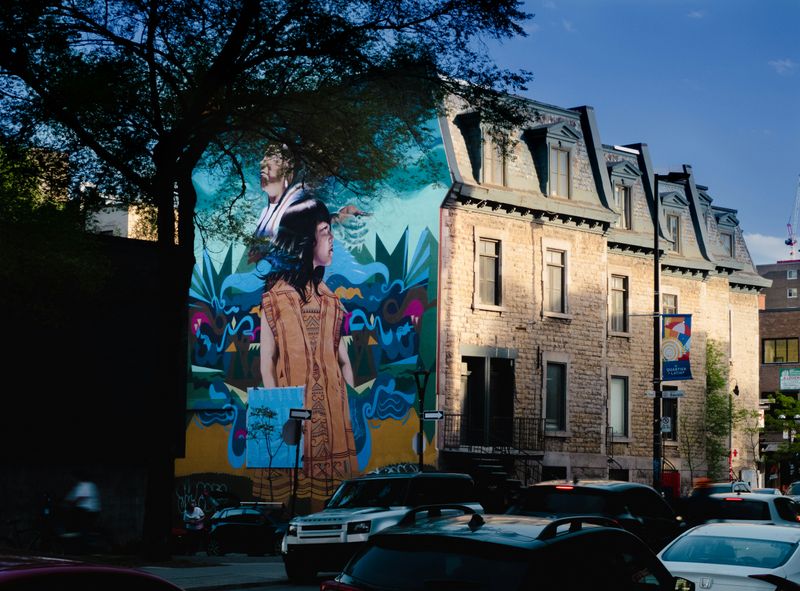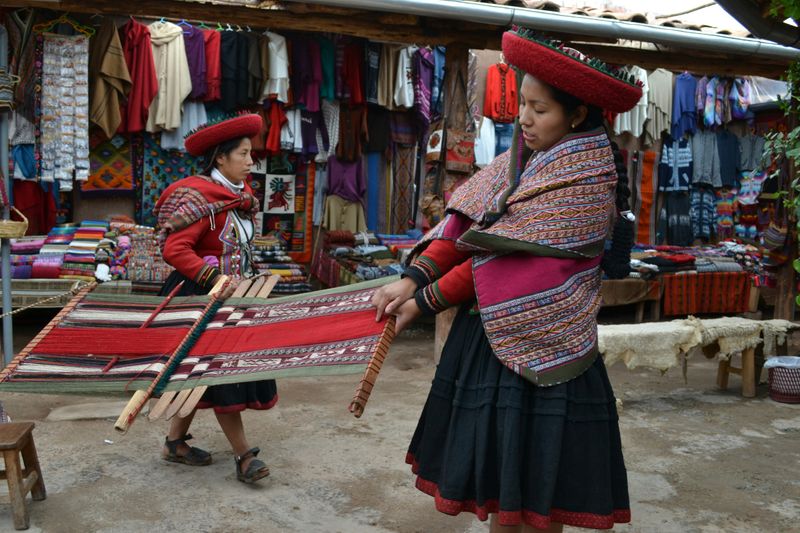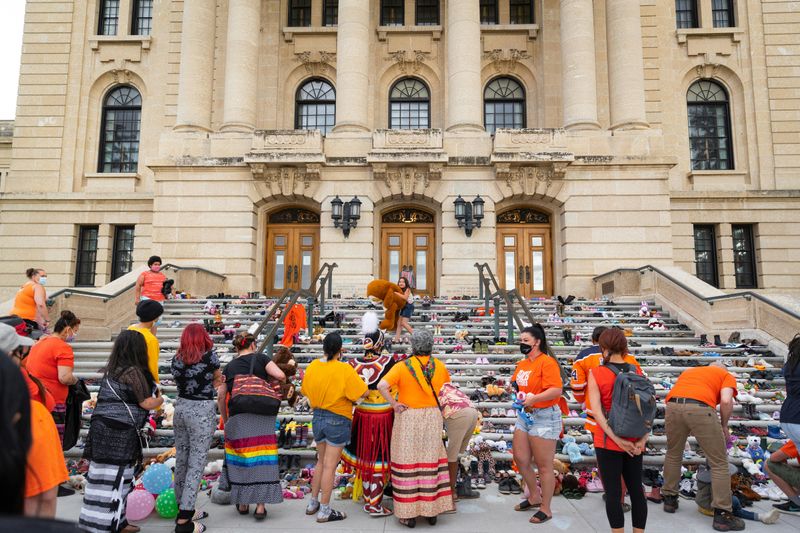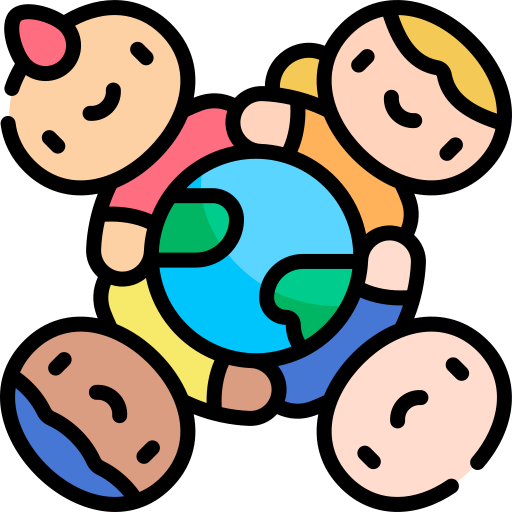
This logo isn't an ad or affiliate link. It's an organization that shares in our mission, and empowered the authors to share their insights in Byte form.
Rumie vets Bytes for compliance with our
Standards.
The organization is responsible for the completeness and reliability of the content.
Learn more
about how Rumie works with partners.
Have you ever wondered what the difference is between Aboriginal, Indigenous, and First Nations?
Why are there different terms, and when should each be used?
Understanding these terms is key to respecting the diverse cultures and histories of the original peoples in Canada.
 Photo by Jay Thousand* on Unsplash
Photo by Jay Thousand* on UnsplashMeet "Aboriginal": An Umbrella Term for First Inhabitants in Canada ☂️
Imagine you're reading a historical document. You come across the term "Aboriginal."
 Photo by Austrian National Library on Unsplash
Photo by Austrian National Library on UnsplashThis term is often found in legal and governmental contexts and includes First Nations, Inuit, and Métis peoples.
 Image courtesy of appaloosa via Flickr
Image courtesy of appaloosa via Flickr
Think of it as an umbrella term from the Canadian Constitution Act of 1982."Aboriginal" is often used in laws and policies, making it a significant term in understanding historical and legal references in Canada. It's like a key that opens the door to many important documents and discussions about the rights and status of these groups.
As per the 2021 Census, over 1.8 million individuals in Canada self-identify as either First Nations, Inuit, or Métis, making up 5% of the country's overall population.
Did you know?
Aboriginal is also a common term used for Indigenous peoples in Australia. Known as Aboriginal Australians, they "have lived on the continent for over 65,000 years." They are culturally diverse — made up of over 250 distinct language groups across the country. Approximately 3 percent of Australia's population can trace their heritage back to Aboriginal ancestry.
Discover "Indigenous": A Global Perspective 🌍
Now, picture yourself at a global conference. You hear the term "Indigenous." This is a more inclusive and contemporary term used worldwide. In Canada, it refers to all Aboriginal groups: First Nations, Inuit, and Métis.
 Photo by Pamela Huber on Unsplash
Photo by Pamela Huber on UnsplashImagine the term "Indigenous" as a bridge connecting local communities to global conversations. It's a term that emphasizes shared experiences and challenges faced by original peoples worldwide, from the Amazon rainforest to the Arctic tundra. This term aligns with international usage, like in the United Nations Declaration on the Rights of Indigenous Peoples (UNDRIP).
Using "Indigenous" acknowledges not just the local context but also the global movement for the rights and recognition of original peoples everywhere. It’s a term that encompasses diversity, resilience, and a shared history of striving for justice and equality.
Quiz
What is the primary use of the term "Indigenous" in global contexts?
The term "Indigenous" globally refers to all original peoples, emphasizing their shared experiences and rights.
Learn about "First Nations": A Unique Identity 🌟
Let's zoom in on "First Nations." This term specifically refers to the various Aboriginal peoples in Canada who are neither Inuit nor Métis. There are over 600 recognized First Nations governments or bands across Canada, each with its own unique culture, language, and history.
 Photo by Tandem X Visuals on Unsplash
Photo by Tandem X Visuals on UnsplashFor instance, the Cree, Mohawk, Ojibwe, and Blackfoot are all distinct First Nations with their traditions, stories, and ways of life. These groups have rich histories that predate European colonization and continue to thrive today.
Recognizing and appreciating the diversity within First Nations is crucial to understanding the full picture of Indigenous cultures in Canada.
Did you know?
The Indigenous peoples of the Arctic are referred to collectively as "Inuit", derived from the Inuktitut language, meaning "the people." Additionally, the term "Métis" denotes a collective of cultural and ethnic identities formed by the unions between Aboriginal and European individuals in present-day Canada.
Context and Usage
Why It Matters 📚
Understanding and using the correct terms will help you avoid confusion. It also shows respect for the unique identities and experiences of these groups. It’s not just about accuracy — it's about honoring their history and contributions.

Communication Tips 💬
Imagine you’re in a lively discussion about Indigenous rights and heritage. Here’s how to use these terms effectively:
Aboriginal: Commonly used in official documents and legislation, it serves as an umbrella term. For example, the Canadian Constitution Act of 1982 uses "Aboriginal" to include First Nations, Inuit, and Métis peoples collectively.
Indigenous: Preferred in contemporary discussions and international contexts. It reflects a global perspective and acknowledges all original inhabitants of Canada, aligning with terms used in global agreements like the UNDRIP.
First Nations: Use this term when referring specifically to the groups of people in Canada who are neither Inuit nor Métis. For instance, if you're discussing treaty rights or cultural practices specific to these groups, "First Nations" is the accurate term.
Cultural Significance

Celebrate Diversity 🎉
Think of the terms "Aboriginal," "Indigenous," and "First Nations" as different ways to appreciate the diverse cultures of the original inhabitants of Canada. Each term helps us see the unique stories and identities of these communities.
"Aboriginal" is like looking at a broad overview of these groups. "Indigenous" connects us with a global perspective, showing respect for all groups together. "First Nations" zooms in on the specific communities that are neither Inuit nor Métis, each with its own unique culture and history.
Quiz
If you're discussing the unique cultural practices of the Blackfoot or Ojibwe peoples, which term is most accurate?
The term "First Nations" accurately refers to specific Aboriginal groups in Canada, like the Blackfoot and Ojibwe, distinguishing them from Inuit and Métis.
Evolving Language 🔄
Language is always changing, just like the world around us. The term "Indigenous" has become preferred in recent years due to its inclusivity and alignment with global standards.
For example, in the field of environmental conservation, the shift to using "Indigenous" acknowledges the deep connection between the land and the native communities who have lived on it for generations. It recognizes their unique role in preserving ecosystems and biodiversity.
Why This Shift Matters 🌟
Language shapes how we perceive and relate to each other. Using "Indigenous" reflects a more nuanced understanding of the diverse cultures and histories within the Aboriginal community.
For instance, in educational settings, embracing the term "Indigenous" fosters respect for the rich knowledge systems and traditions of original peoples, creating a more inclusive and equitable learning environment. It’s like upgrading from a basic map to a detailed, interactive one — it gives a fuller picture.
Take Action
Congratulations! You've learned how to apply these distinctions.

Now, take the next step. When referring to Aboriginal, Indigenous, and First Nations peoples, use the correct terminology. Acknowledge their unique identities, histories, and contributions to society.
This Byte has been authored by
Jassica Jassica
Mathematics Teacher, Curriculum Developer
B.A. and B.ed